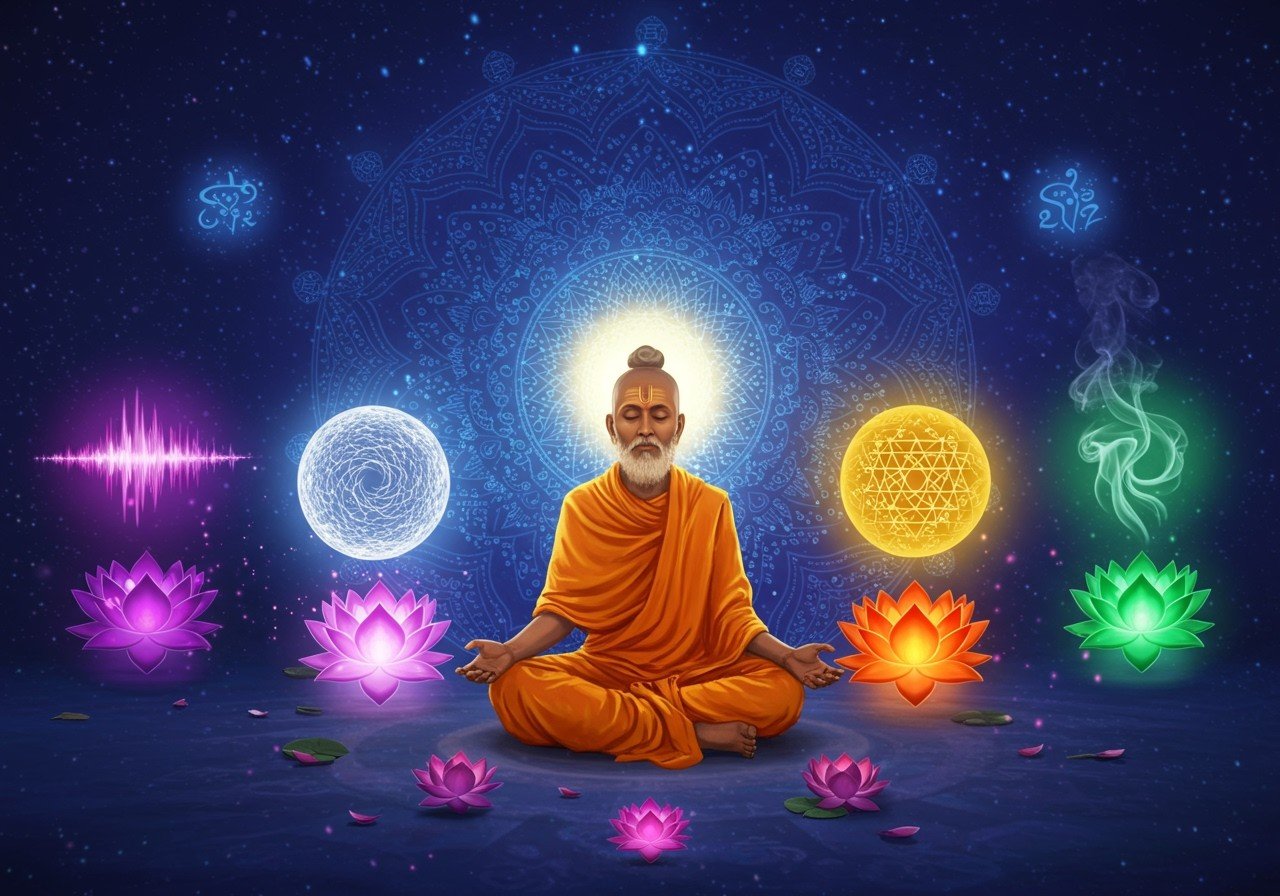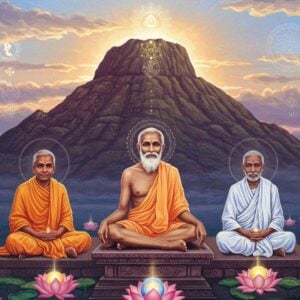
Ayurveda, the ancient Indian healing system, offers profound insights into the equilibrium of mind, body, and spirit. Central to this system are the Pancha Tanmatras, also known as the five subtle elements. These elements connect us to the natural world through our senses. Understanding these elements allows us to appreciate their influence on our health and spiritual well-being.
Understanding the Pancha Tanmatras
The term Tanmatra translates to “subtle essence” in Sanskrit. These essences bridge our sensory experiences with the elements of nature. In Ayurveda, Pancha Tanmatras are considered fundamental, as they form the basis of the five gross elements, known as Pancha Mahabhutas. Each Tanmatra corresponds to a specific sense and element, shaping how we perceive and interact with our surroundings.
- Shabda (Sound): Associated with space (Akash) and the sense of hearing.
- Sparsha (Touch): Linked to air (Vayu) and the sense of touch.
- Rupa (Sight/Form): Connected to fire (Tejas) and the sense of vision.
- Rasa (Taste): Related to water (Ap) and the sense of taste.
- Gandha (Smell): Tied to earth (Prithvi) and the sense of smell.
These Tanmatras develop into the gross elements, reflecting Ayurveda’s holistic perspective on life. Comprehending this process helps us recognize the interconnectedness of our senses and the natural world.
Delving into the Five Tanmatras
Shabda (Sound)
In Ayurveda, sound holds a significant role. Shabda, linked to space and the sense of hearing, acts as the primary medium for communication and expression. Experiencing calming music or the sounds of nature can have a soothing effect on the mind. Ayurvedic practitioners often utilize mantras to harness the therapeutic power of sound. Nada Chikitsa, or sound therapy, aids in maintaining mental and emotional equilibrium.
For a deeper exploration of sound and its significance, read our blog post on Mantra Chanting.
Sparsha (Touch)
Sparsha, connected to the air element, influences our tactile experiences. The sense of touch is crucial for physical and emotional comfort. A gentle massage with natural oils can alleviate stress, improve circulation, and promote relaxation. Ayurveda emphasizes the healing potential of touch through therapies like Abhyanga, a traditional massage that fosters overall well-being. Find essential oils for massage on Poojn.in.
Rupa (Sight)
The fire element governs sight. Rupa connects us with visual perception, transformation, and our ability to interpret the world around us. Maintaining healthy vision is crucial for balance and clarity of thought. Ayurveda recommends regular eye exercises and exposure to natural landscapes to preserve visual health. The calming effect of nature can enhance mental peace and tranquility.
Rasa (Taste)
Taste, related to the water element, is essential for nourishment, pleasure, and overall well-being. Ayurveda categorizes taste into six fundamental flavors: sweet, sour, salty, bitter, pungent, and astringent. Each taste plays a unique role in digestion and health. A balanced diet incorporating all six flavors is essential for proper nourishment. Explore Ayurvedic ingredients like Harad on Poojn.in.
Gandha (Smell)
The earth element is associated with the sense of smell, influencing memory, emotions, and our connection to the present moment. Aromatherapy harnesses the power of natural scents to restore the mind-body connection. Essential oils can improve mood, reduce stress, and promote relaxation. Smell is a powerful sense that can evoke memories and emotions, providing a deeper connection with oneself. You can find various dhoops and agarbattis at Poojn.in.
Pancha Tanmatras and Ayurvedic Healing
Ayurveda uses the understanding of Tanmatras to diagnose and address imbalances. For instance, an imbalance related to sound might manifest as anxiety, difficulty communicating, or hearing problems. Therapeutic practices like sound therapy and aromatherapy are often utilized in Ayurveda to restore harmony among the Tanmatras. Balancing these elements is believed to prevent disease and enhance longevity.
Learn more about Ayurveda and spirituality through our blog post on Ayurveda and Spirituality.
Integrating Pancha Tanmatras into Daily Life
Incorporating an awareness of the Pancha Tanmatras into our daily routines can significantly enhance our sensory perceptions and overall well-being. Practices like meditative listening, mindful eating, and conscious appreciation of natural beauty help us connect more deeply with our senses and the natural world. Using essential oils, healing sounds, and mindful touch can bring balance to the senses. Adopting a sattvic diet and engaging in regular exercise can further harmonize the Tanmatras, promoting overall health and vitality.
Cultural and Spiritual Significance of Pancha Tanmatras
The Pancha Tanmatras have deep cultural and spiritual roots in Indian traditions. They play a vital role in spiritual practices like yoga, meditation, and various forms of worship. Understanding these subtle elements can deepen our appreciation for the interconnectedness of all life. The Tanmatras are also associated with the chakras, or energy centers, providing guidance on the path of self-awareness and spiritual enlightenment. Poojn.in offers authentic puja items, such as Pancha Ratna sets, camphor tablets, and candles to support your spiritual practices.
Embracing the Pancha Tanmatras for a Balanced Life
Ayurveda’s ancient wisdom provides valuable insights into achieving optimal health and well-being through the understanding of the Pancha Tanmatras. By embracing these elements, we can cultivate a more balanced and harmonious life, connecting with tradition, nature, and the profound wisdom within ourselves.
Explore our wide range of products related to Ayurveda and spiritual well-being at www.poojn.in.


